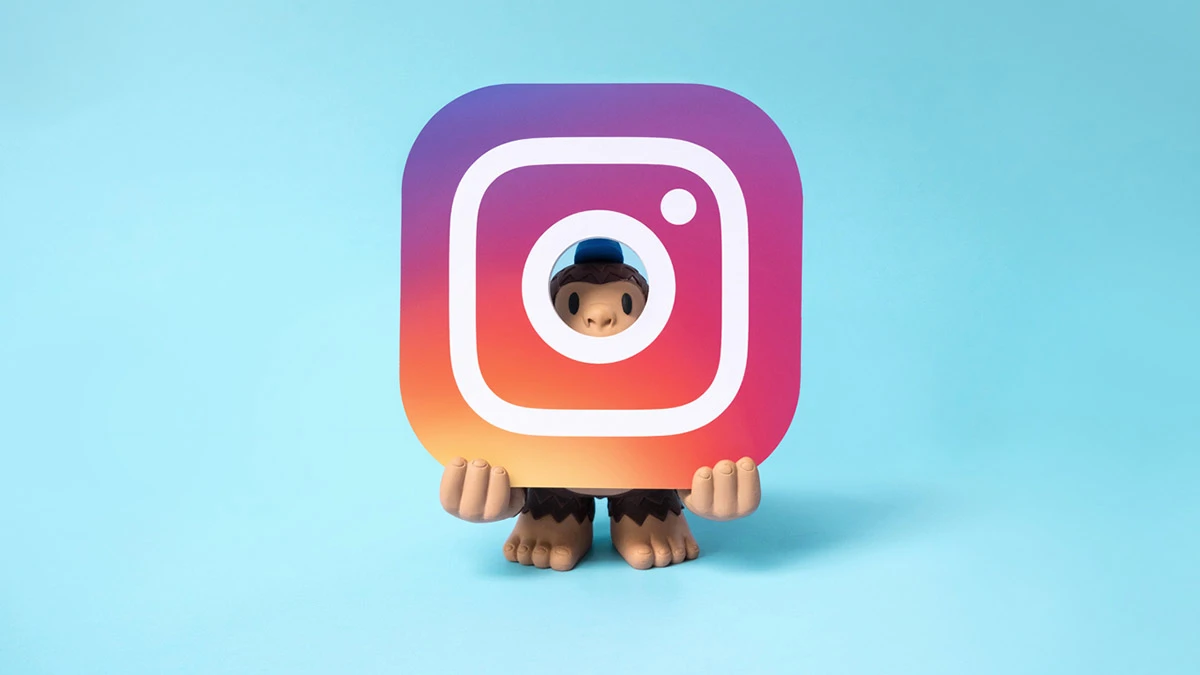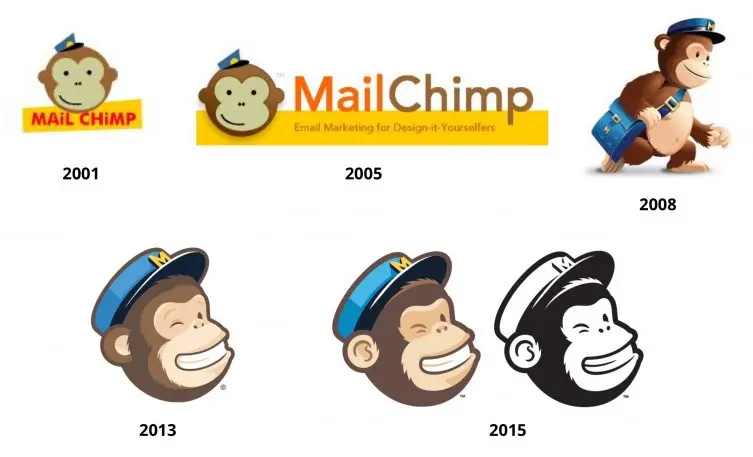MailChimp did not start out as an enterprise obviously destined to help millions of small companies market themselves via email.
Actually, the company was originally the Rocket Science Group, a web-design firm that began fooling around with email in 2001 at the request of some of its customers. Its original email engine borrowed code from an earlier failed e-greeting card startup. Ben Chestnut and Dan Kurzius landed on the name MailChimp after discovering that their first choice, ChimpMail, was taken. And their initial simian-themed branding consisted of a repurposed drawing of a chimp–eventually known as “Freddie”–who’d appeared on one of the e-greetings.
The email marketing features the company built proved so useful that they began to look like a better opportunity than the design business–which, Chestnut says, “was all about billable hours and salesmanship, and those were things we sucked at.” In 2006, Chestnut and Kurzius decided to go all-in with MailChimp. “We took a year saying goodbye to all the agencies and clients, finding them new vendors,” he explains.

MailChimp really went into turbo mode in 2009, when it instituted a freemium business model that let customers send up to 3,000 emails a month to up to 500 subscribers at no cost. Letting companies get addicted to the service before requiring them to pay up proved so successful that the free version now lets users send 12,000 emails to 2,000 subscribers.
Now MailChimp is probably the biggest name in its category–in part because its offerings are so well done and widely used, and in part because it’s cleverly promoted itself via efforts such as quirky sponsorship messages on the Serial podcast. And despite its high profile, it’s even larger than you might guess. Based in Atlanta–far outside Silicon Valley’s bubble of venture-funded would-be unicorns–the company has 600-plus employees and did more than $400 million in revenue last year. More than 15 million customers sent 246 billion emails in 2016.
There are still additional small businesses out there that need help with email, but MailChimp’s growth strategy isn’t just about finding them. It’s also committed to keeping its focus on serving small businesses rather than using them as a springboard to reach larger customers with more lavish budgets.

Though Chestnut is quick to tout the effectiveness of email marketing–he says it can return $40 in revenue for every $1 spent–he also claims “not to have any particular kind of affinity or attachment to email.” The future of the company, he says, is “to take MailChimp magic we give to email, and sprinkle it on other marketing channels.”
That vision has been apparent in the company’s product announcements for awhile now. A year ago, it introduced a recommendation engine–akin to the ones devised by big companies such as Amazon–that let its customers plunk product suggestions into the emails they sent their customers. Then in January of this year, it began helping small businesses buy Facebook ads–figuring that the expertise it had in building friendly web interfaces gave it an opportunity to make the process easier than Facebook had done on its own.

The Instagram Opportunity
As MailChimp was deciding what big ad platform to support after Facebook, it sought input from its customers. They had a clear favorite: Instagram. If you find that unexpected, you’re not alone. “We kind of thought Google might be next,” Chestnut says. “Instagram was a surprise for us.”
Once you think it over, though, that preference makes more and more sense. In March, Instagram announced that it had a million active advertisers, a milestone it reached in large part because a lot of small businesses find it to be a valuable marketing platform. Any digital business with that many small-business customers is likely to have meaningful overlap with MailChimp’s customer base.
Chestnut speculates that another reason for Instagram’s popularity among MailChimp users is that writing the ad copy required for a Google ad sounds like more work than creating an image-centric Instagram post. In fact, he says, many small companies are already adept at promoting themselves simply by having and maintaining Instagram accounts: “Anything that’s new and free, they’re going to exploit the hell out of.”
As with Facebook, MailChimp’s Instagram ad-buying feature aims to simplify the process of purchasing ads. Just as important, it allows Instagram to choose the pool of users who will see an ad by picking people similar to those in the MailChimp customer’s email file, allowing for more precise targeting. “When they use Instagram alone, they get OK results,” Chestnut says. “But when they combine it with MailChimp, they get much better results.”
https://www.youtube.com/watch?v=EVL6bYW8aEE
MailChimp’s strategy with these new ad-buying services and other functionality it’s recently added isn’t to give itself a new revenue stream. Instead, it’s offering them as part of its existing subscriptions at the same price as before. As with its freemium model, the company is betting that the more essential it can make itself to the way small businesses operate, the easier it will be to get large numbers of them to pay on an ongoing basis.
With MailChimp’s broadening of its mission beyond email, it won’t run out of new features to roll out anytime soon. Since the Instagram feature launched in May, the company has added integration with online commerce service PrestaShop alongside its existing support for commerce platforms such as Shopify and Magento. (PrestaShop is particularly popular in Europe, and over half of MailChimp’s business now comes from outside the U.S.)
The company is also experimenting with a marketing medium I would not have predicted: direct mail, delivered by the U.S. Postal Service. It isn’t a logical option for every small business, Chestnut emphasizes–“if you’re selling something for $2, you’re not going to benefit from direct mail, you’ll lose money on it”–but for high-ticket items, it could have its place. And he adds that he’s often heard that direct mail is ripe for democratization, thereby playing to MailChimp’s strengths as an outfit that specializes in streamlining the complexity out of marketing tasks.
With its large base of email customers, MailChimp also has the opportunity to blur the lines between marketing’s digital and physical realms. “Maybe we send an email, and if you opened and didn’t buy, we send something a week later via snail mail,” Chestnut muses.

Marketing MailChimp
Once upon a time, MailChimp actively avoided conventional marketing of itself. “Ben had this idea: Instead of spending money on traditional advertising, we’d take that money and buy shirts and give them away,” says Mark DiCristina, MailChimp’s senior director of brand marketing. “It worked really well. Part of that is people like free stuff. But we made really nice T-shirts and they had Freddie our mascot on them and they didn’t have our logo anywhere. It was more like a gift they received than swag.” The fact that these freebies were so well done, DiCristina says, helped shape MailChimp’s overall desire to be a brand associated with quality.
https://m.youtube.com/watch?v=iVz3VOYCCDI
Particularly given MailChimp’s current broadening of its horizons, the company is now more interested in marketing itself in a way that feels more like marketing–while still feeling like MailChimp. Its current efforts began with a campaign that like that memorable Serial spot, riffed on its own odd name. It involved terms such as “JailBlimp,” “MailShrimp,” and “KaleLimp,” and was about as far from a hard sell as imaginable. “Rather than coming out of the gates with all this stuff explicitly about functionality, we [showed] them we’re still the same MailChimp they love,” Chestnut explains.
Now the company has followed up with “MailChimp vs. the Black Hole,” a set of ads that do tout specific benefits such as the ability to use your MailChimp customer list to pinpoint prospects on Instagram. They remain quirky–the black hole even talks in some of them–but the quirkiness serves the straightforward goal of explaining what MailChimp is and what it can do for small businesses.
Which brings up another marketing medium that the company has found effective for telling people about its expanding portfolio of features: email! MailChimp, it turns out, is a happy MailChimp customer. “In all seriousness,” Chestnut says, “it gets us the best ROI when we email our customers and tell them this stuff is available.”
Recognize your brand’s excellence by applying to this year’s Brands That Matter Awards before the early-rate deadline, May 3.
